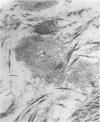Abstract
The fine structure alterations in the atrium and atrial appendage, mitral valve and papillary muscle are described in 11 matched patients with chronic rheumatic heart disease. The muscle changes consisted of loss of myofilaments and accumulation of lipid and osmiophilic dense bodies. The connective tissue stroma of the atrium and the mitral valve showed extensive deposition of collagen and elastic fibers. There were numerous foci of collagen degeneration, characterized by fraying of the collagen fibers and accumulation of homogeneous granular material at these sites. Although the muscle changes were more striking, the connective tissue alterations appear important in the evolution of the chronic disease. The extent of collagen degeneration appeared to parallel the degree of collagen formation. The muscle fiber degeneration and connective tissue alterations did not correlate with the clinical findings. At the resolution of the electron microscope, the continuing process in the rheumatic heart appears to be primarily collagen formation and degradation rather than primary degeneration of the muscle fibers. It is the balance of these processes which determine the clinical state of the patient. Acute muscle damage along with evidence of inflammation do not seem to be associated with progressive, chronic rheumatic heart disease.
Full text
PDF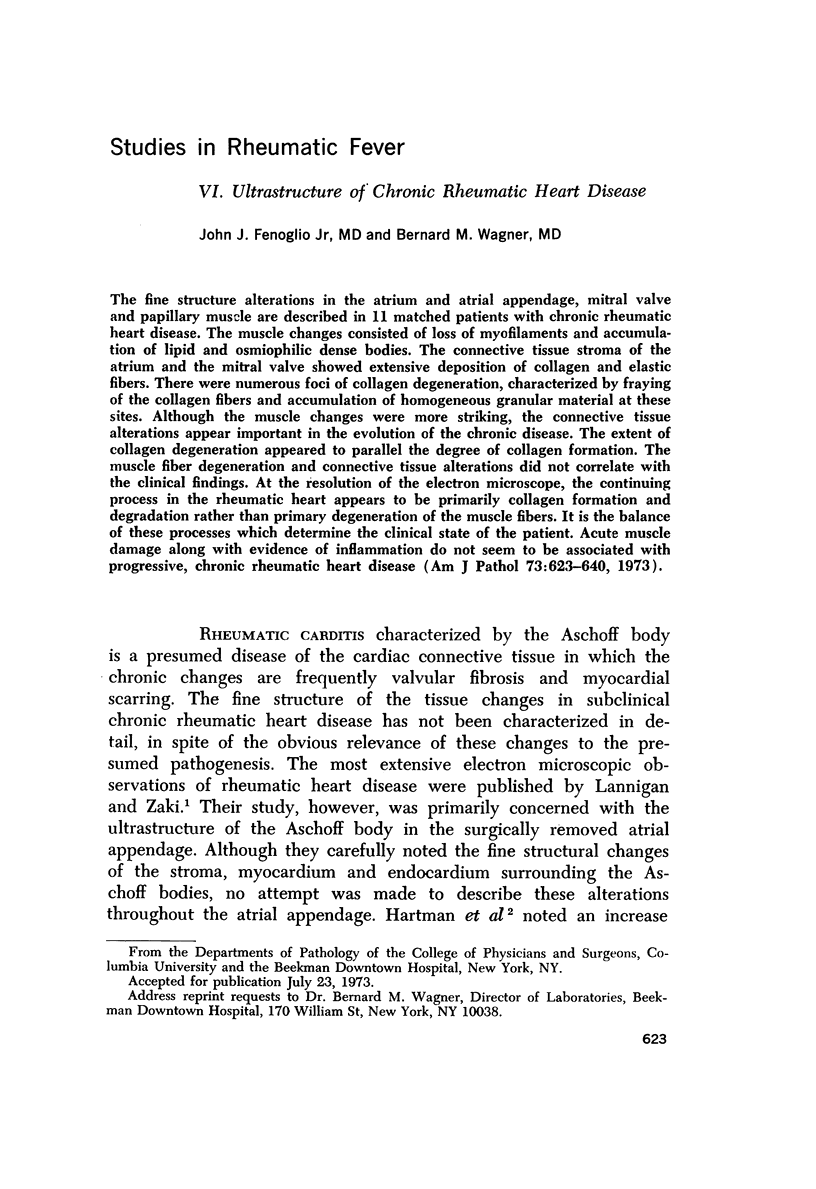
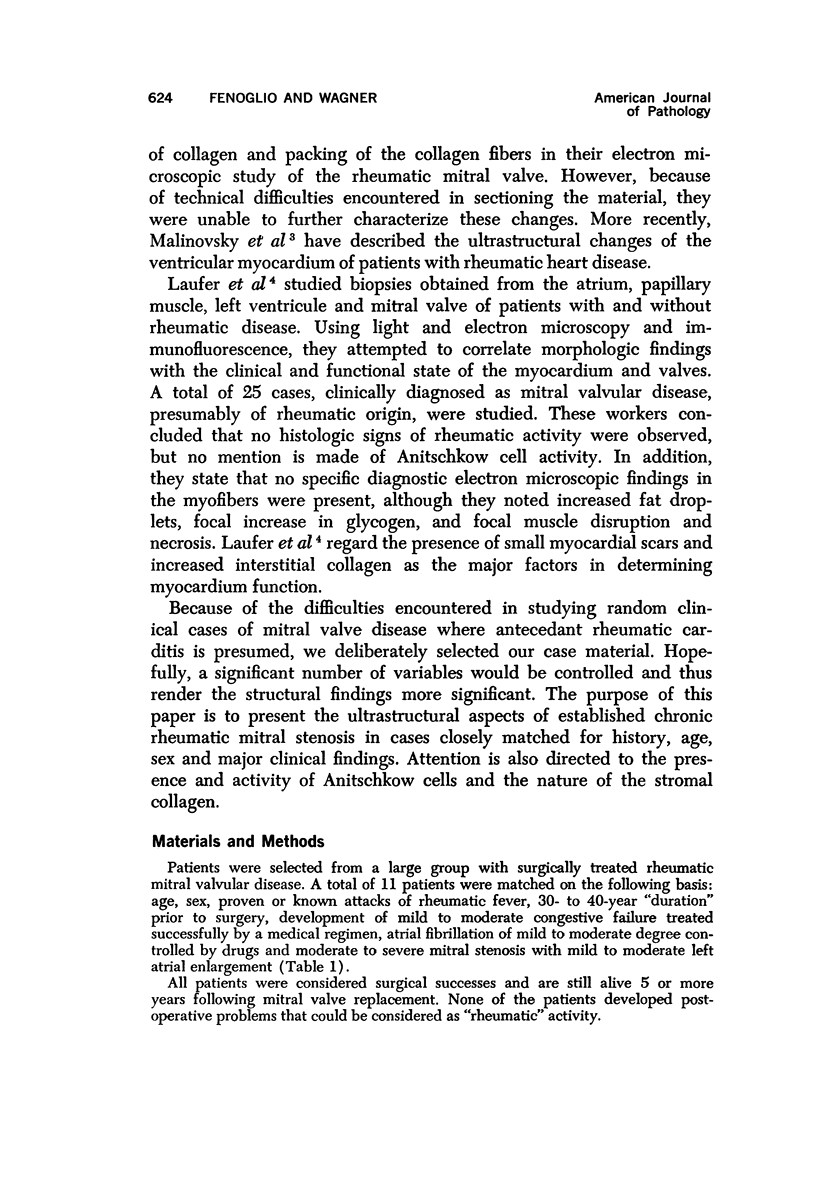
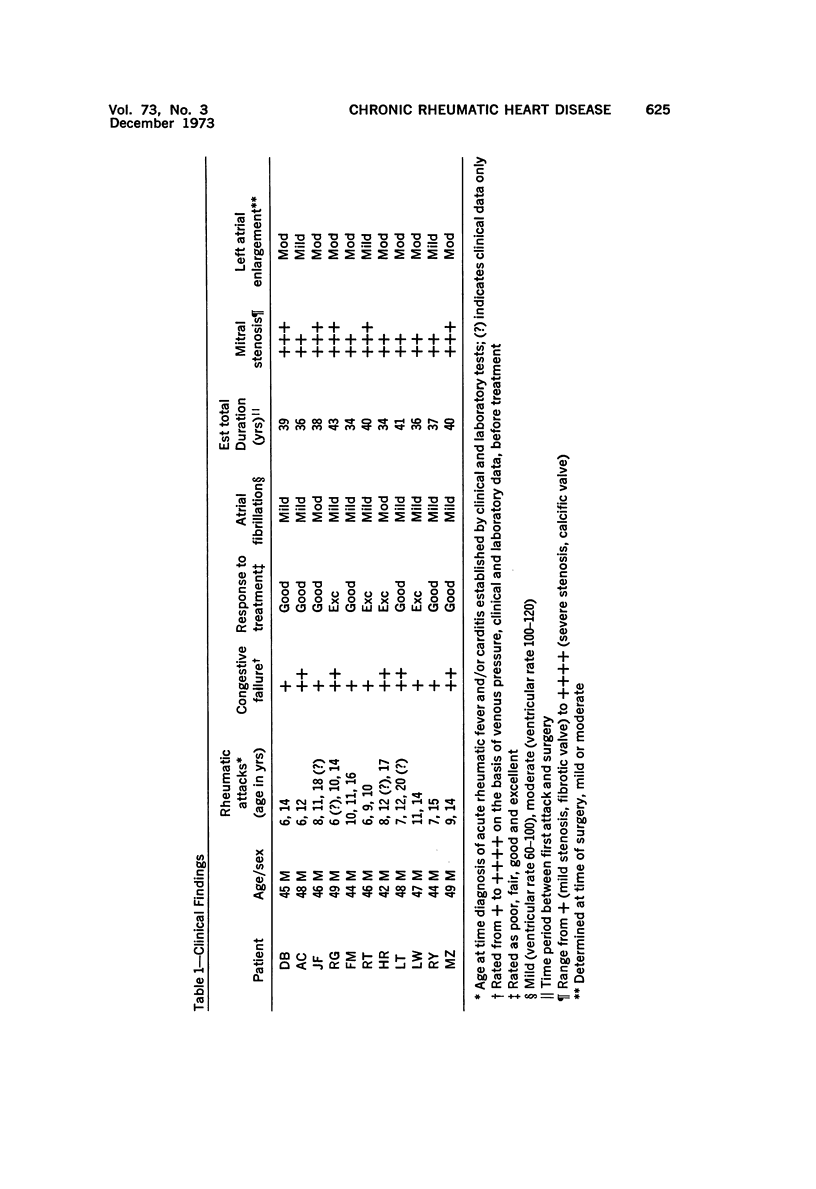
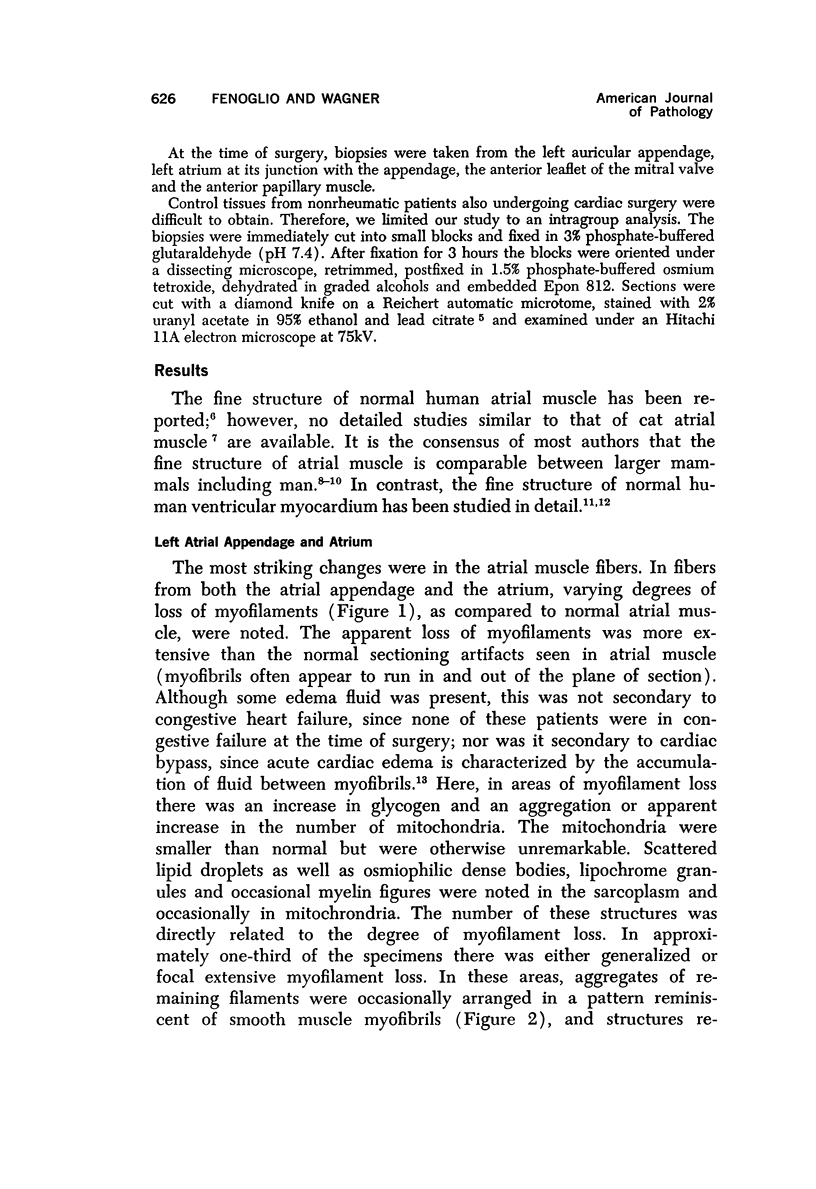
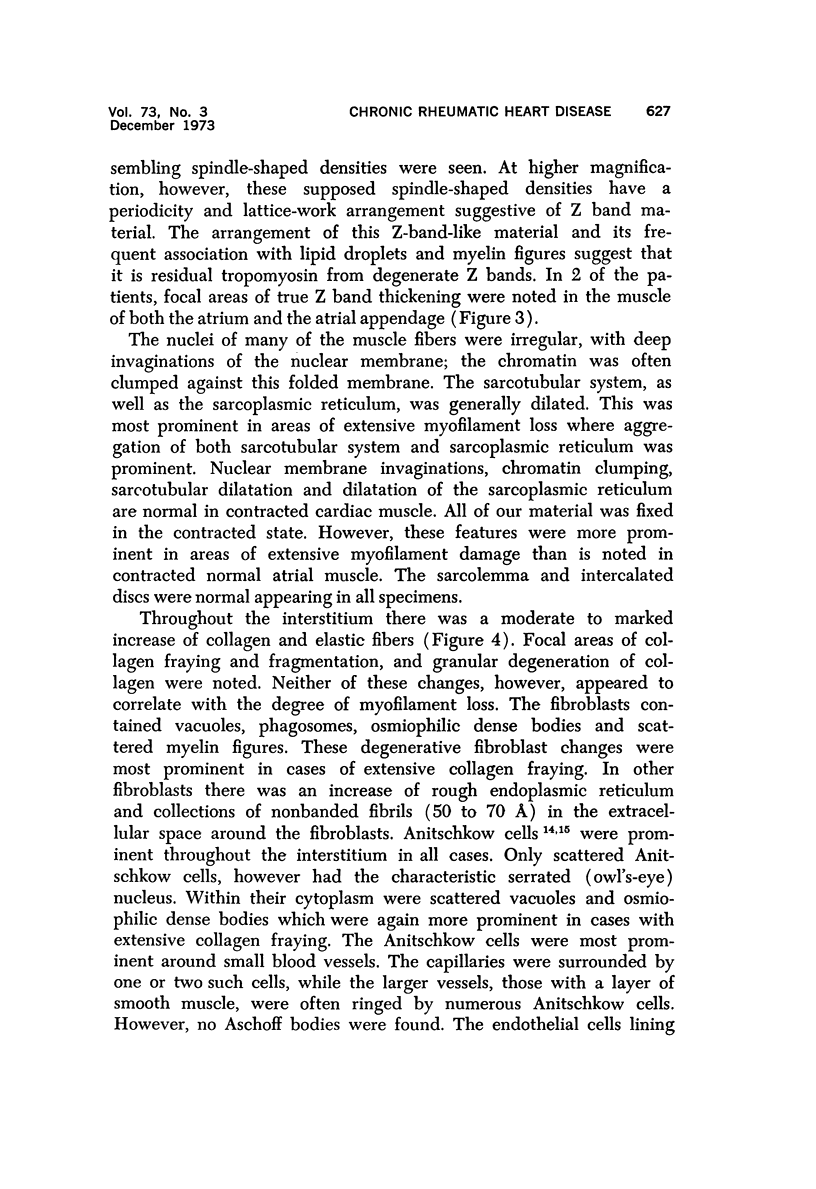
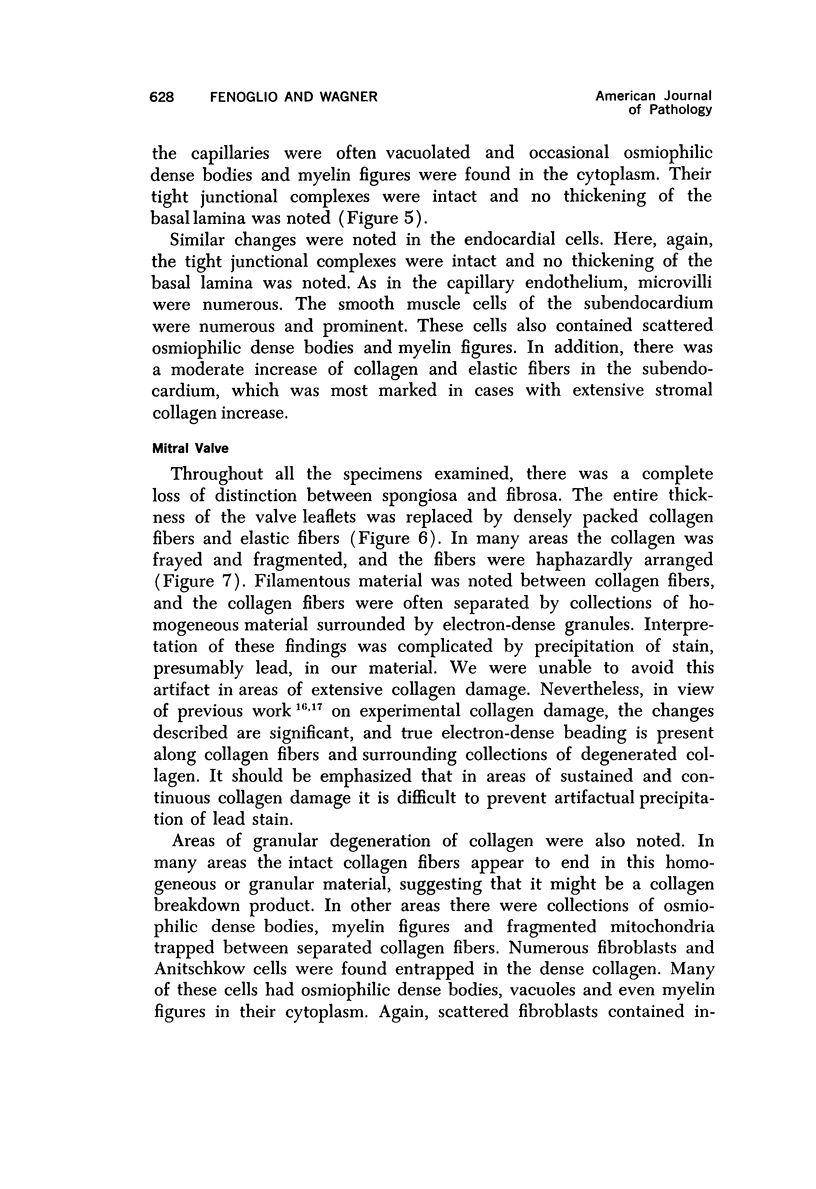
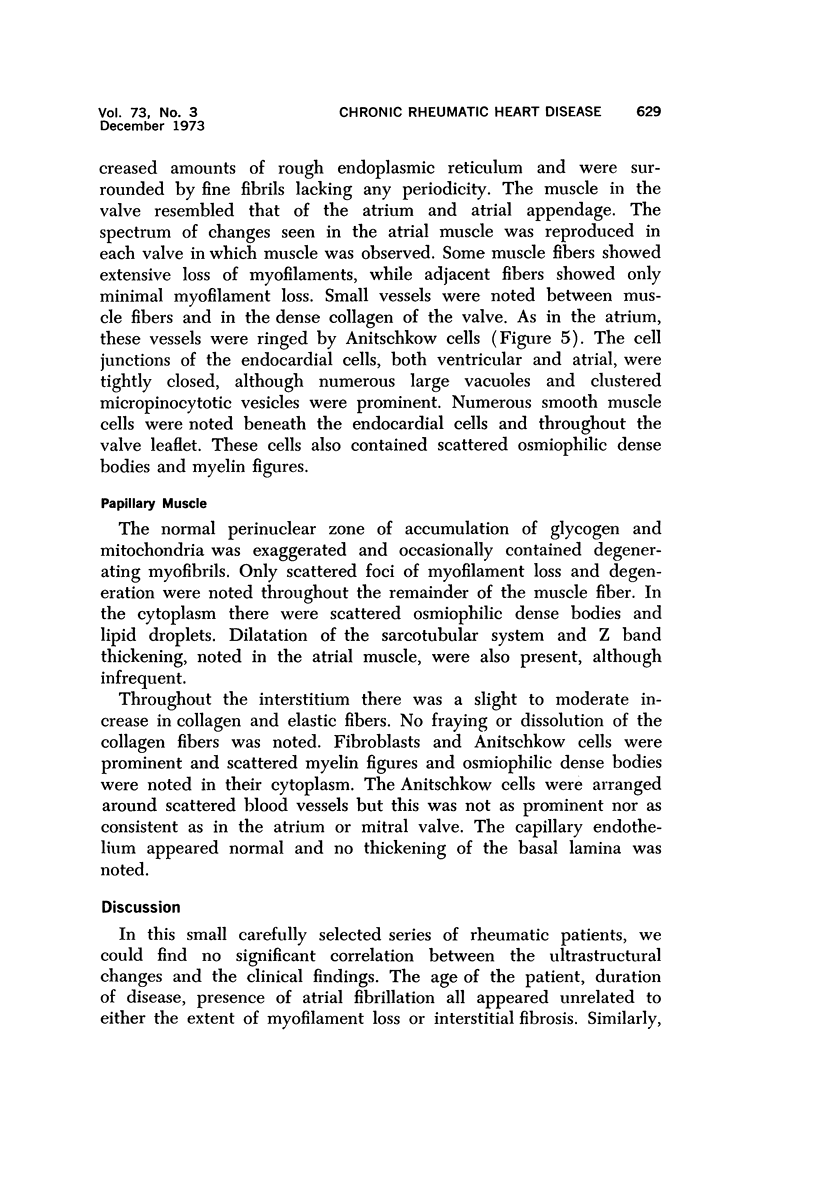
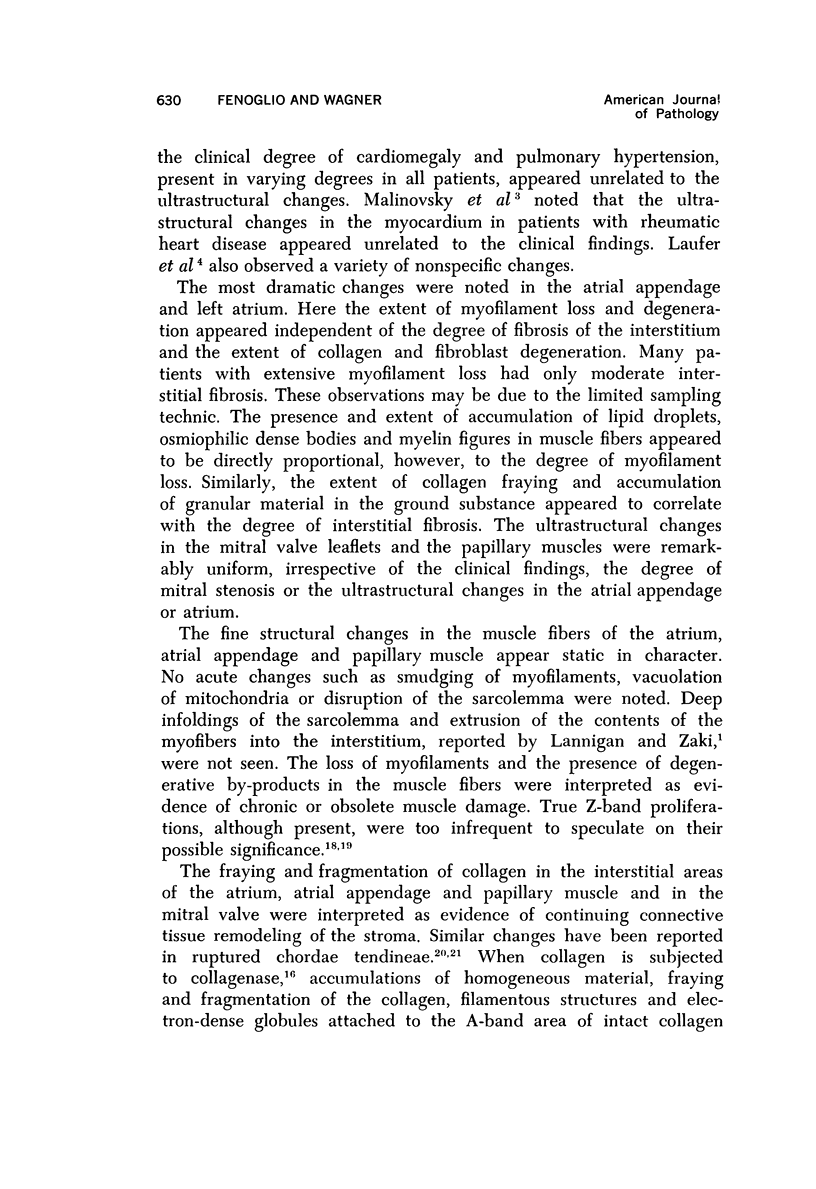
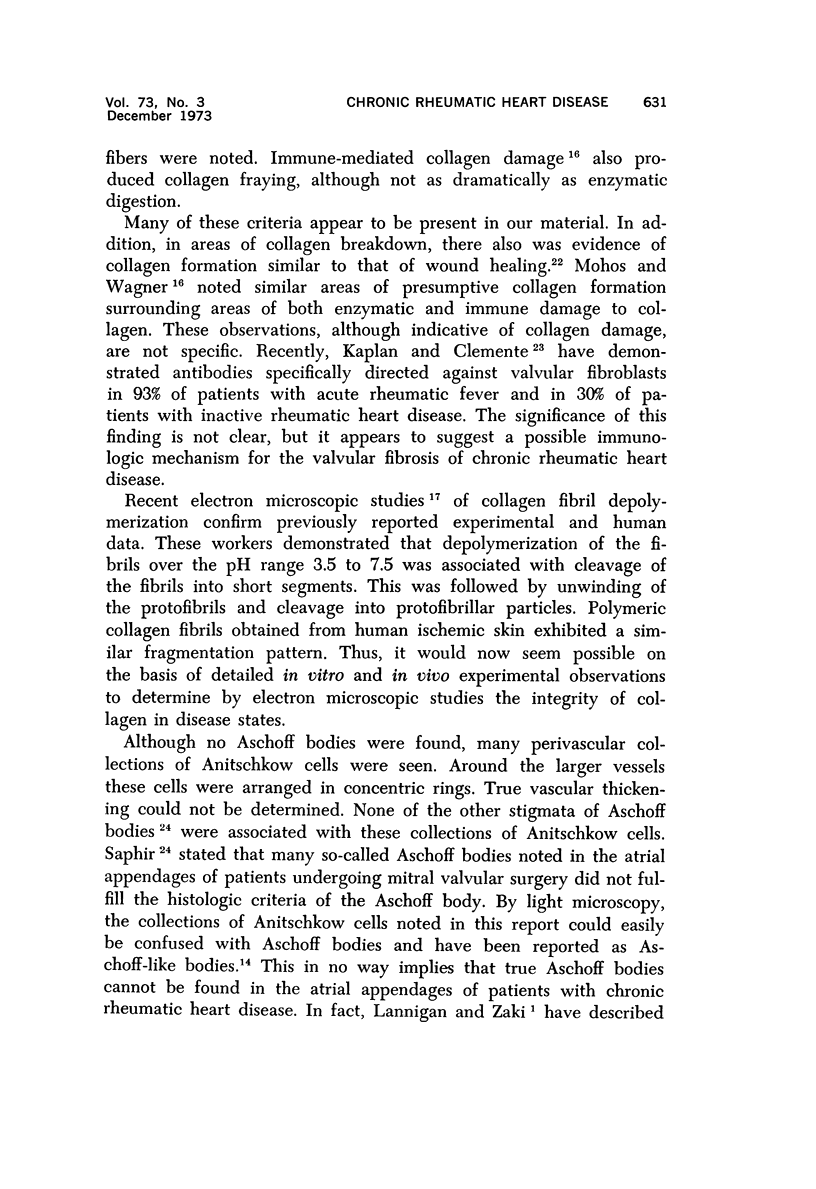
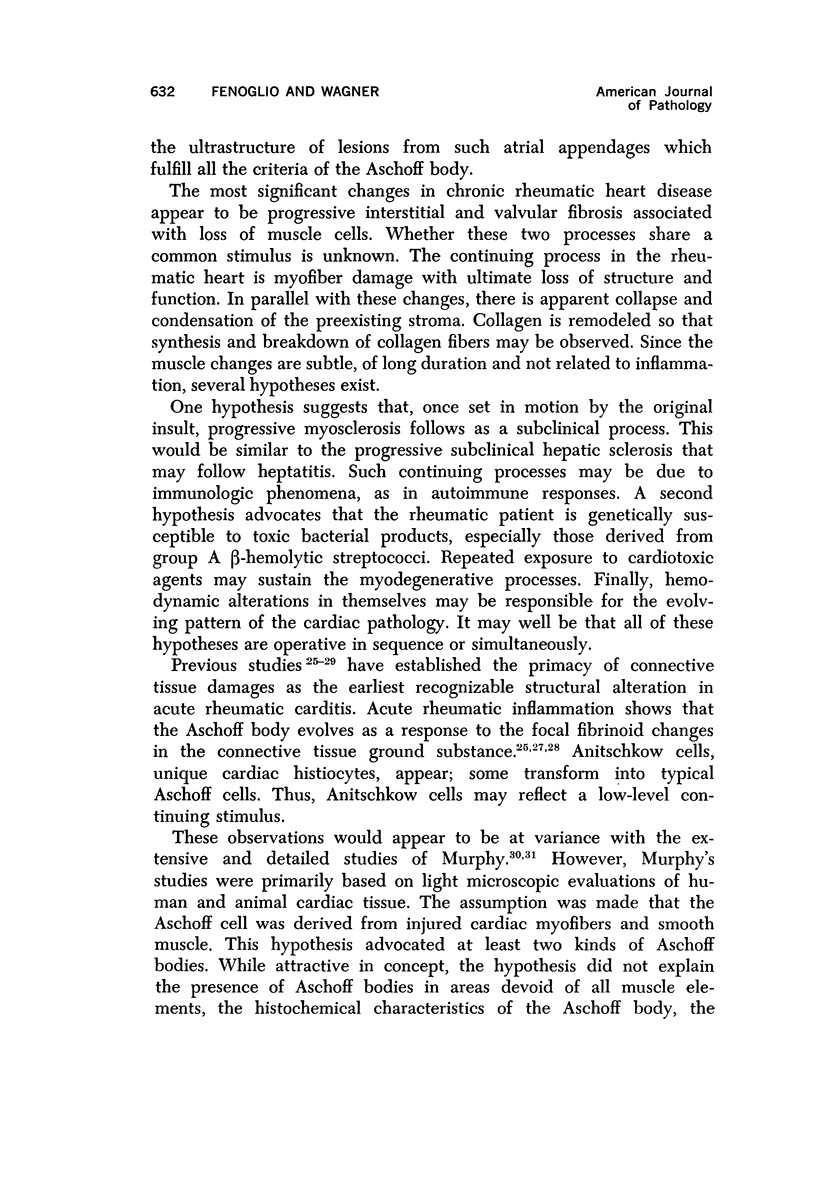
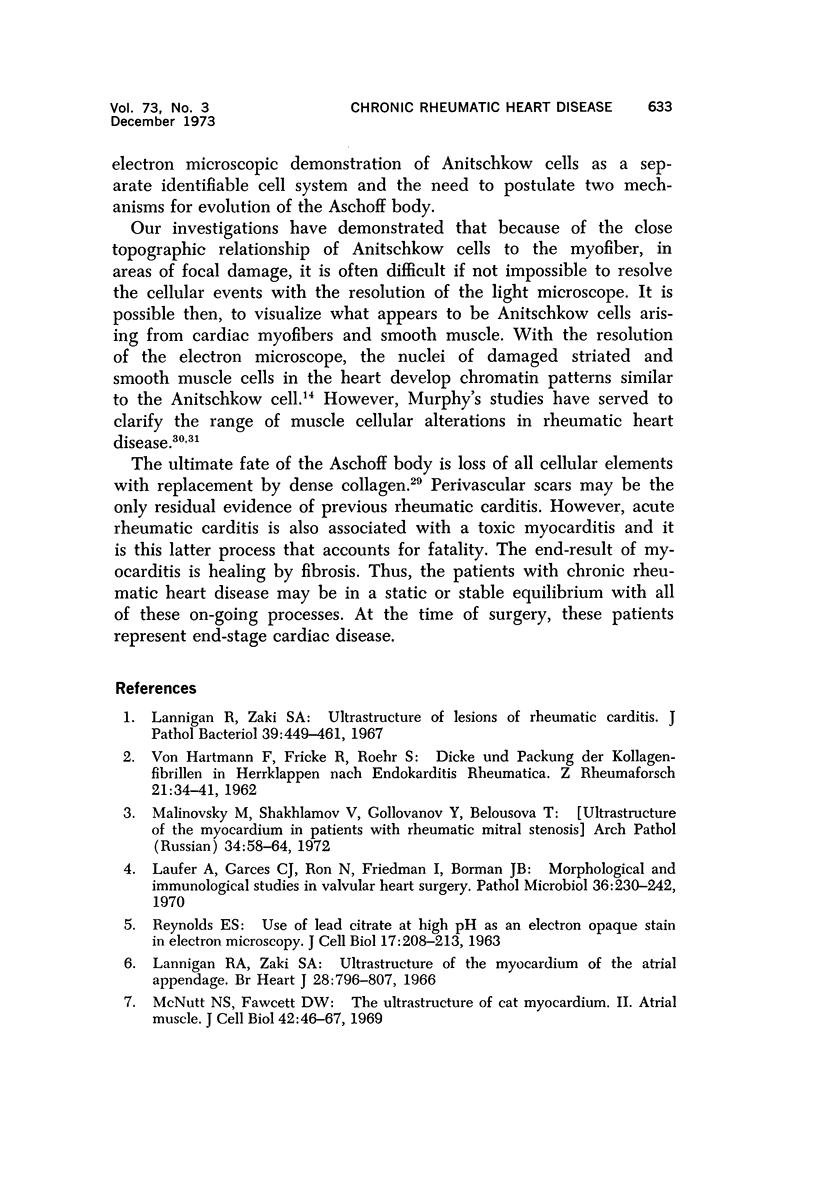
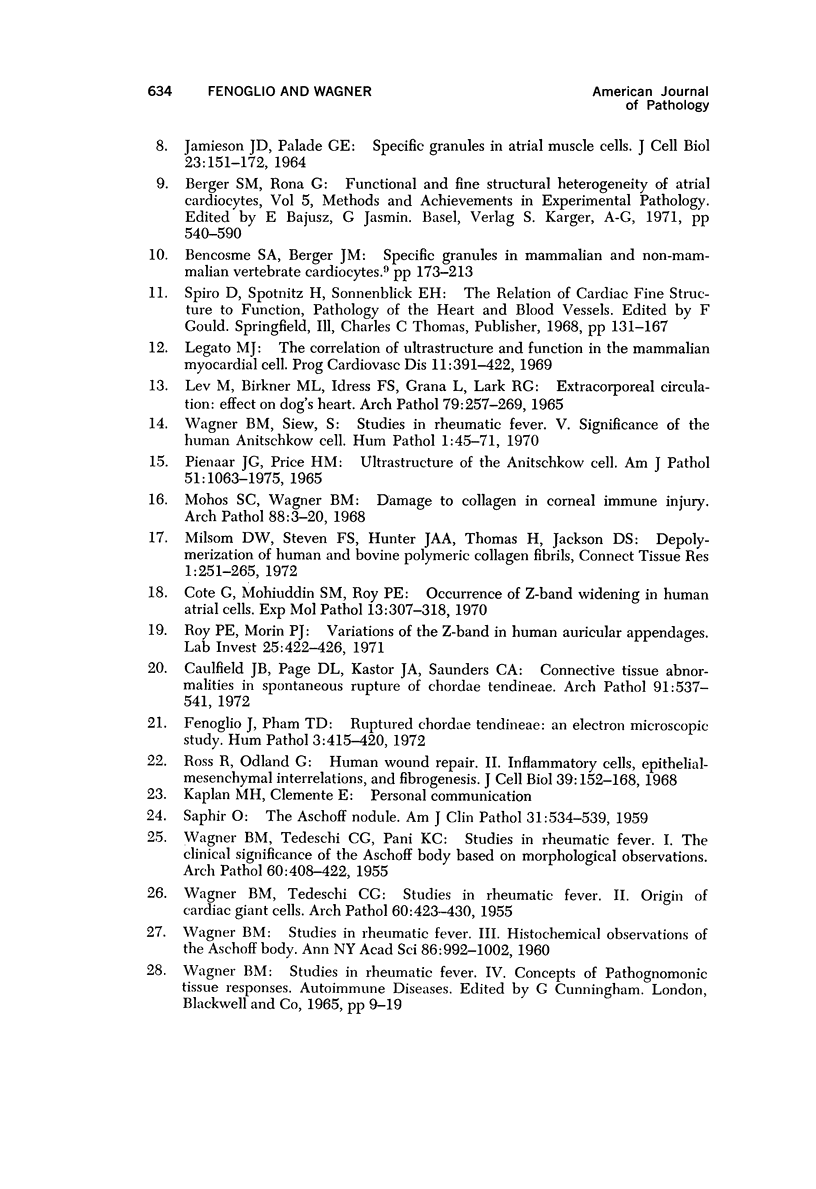
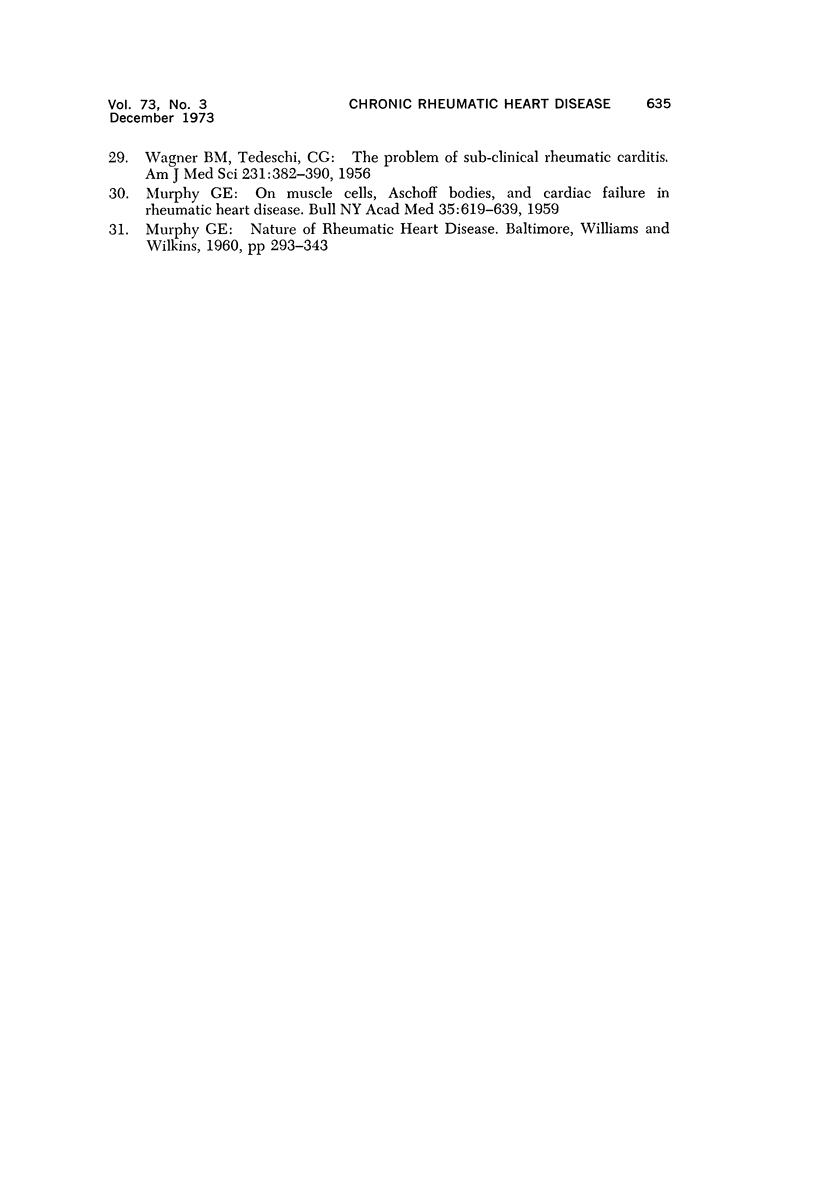

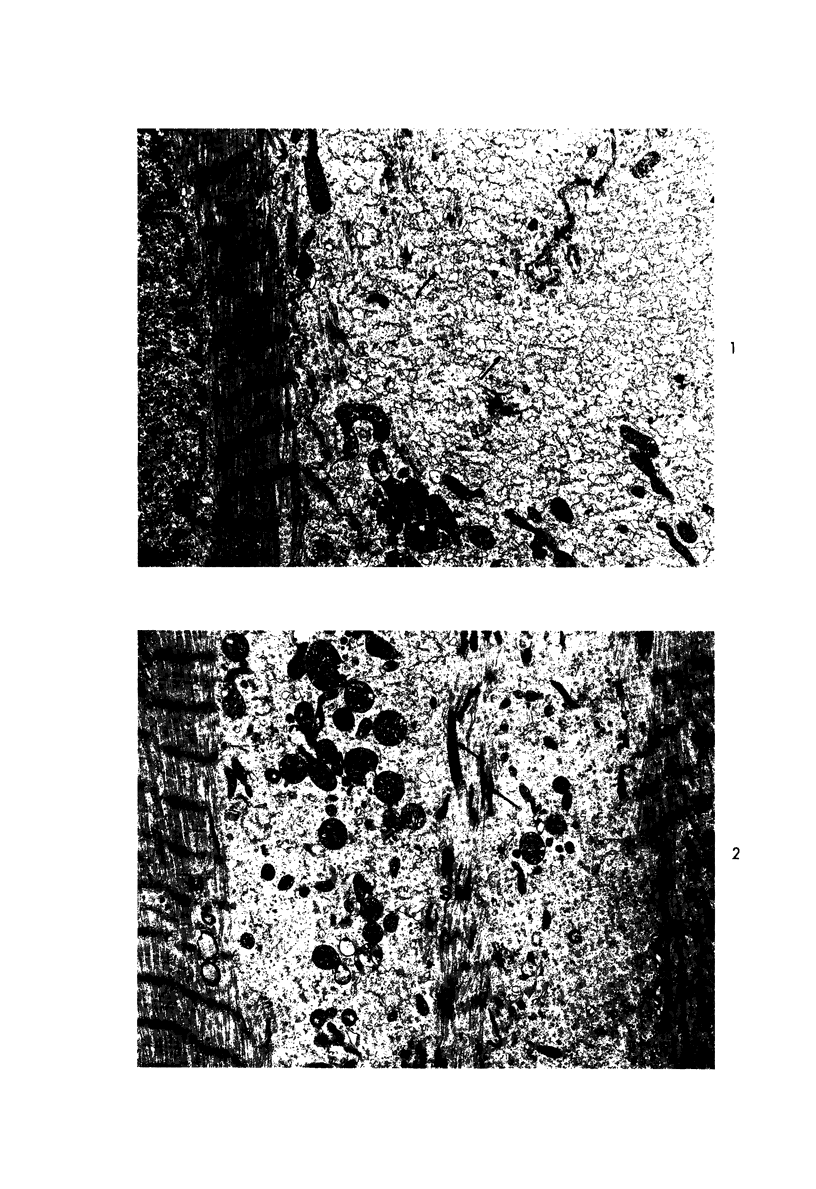
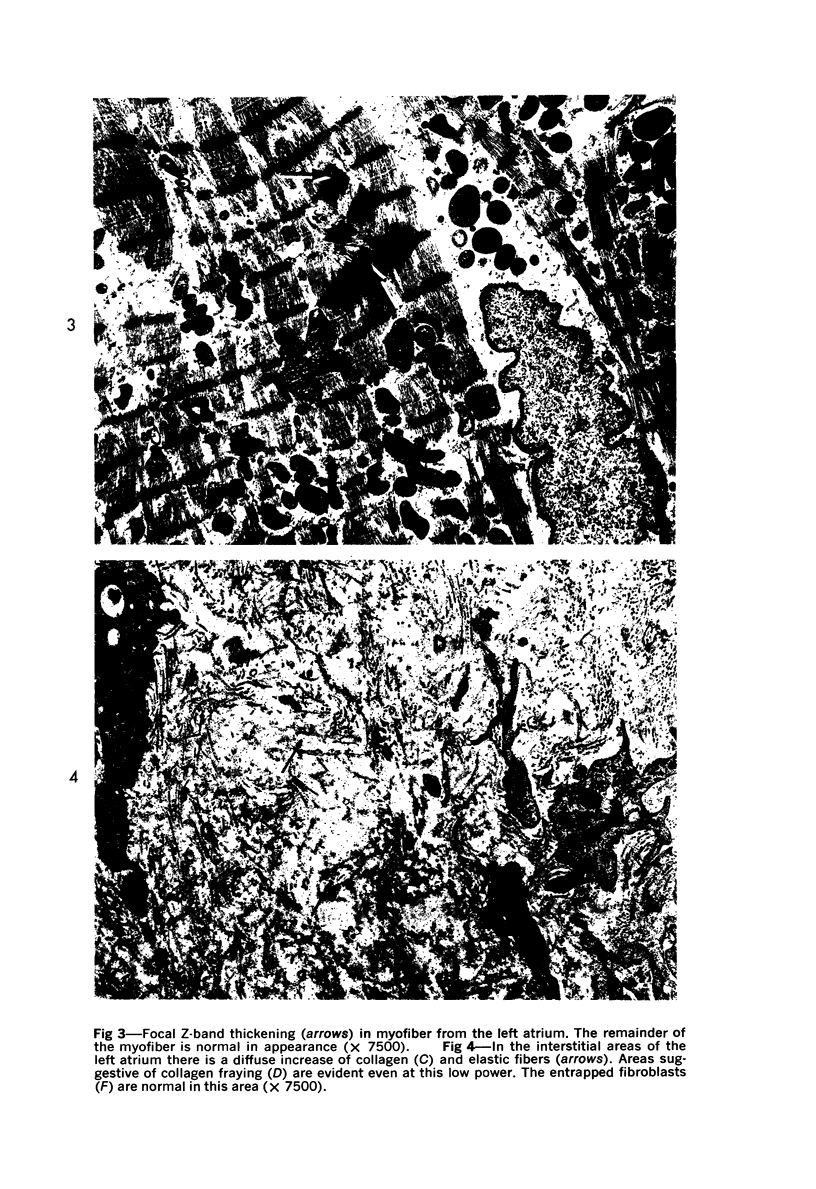
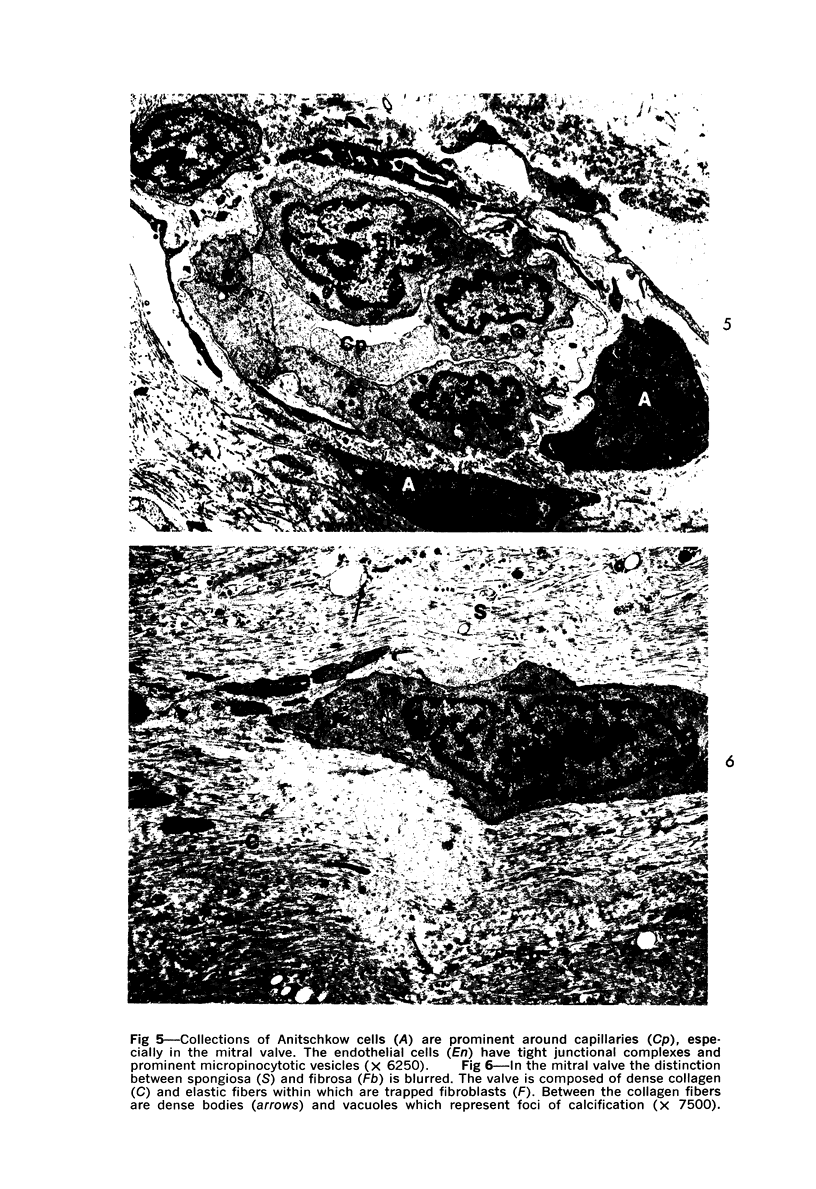
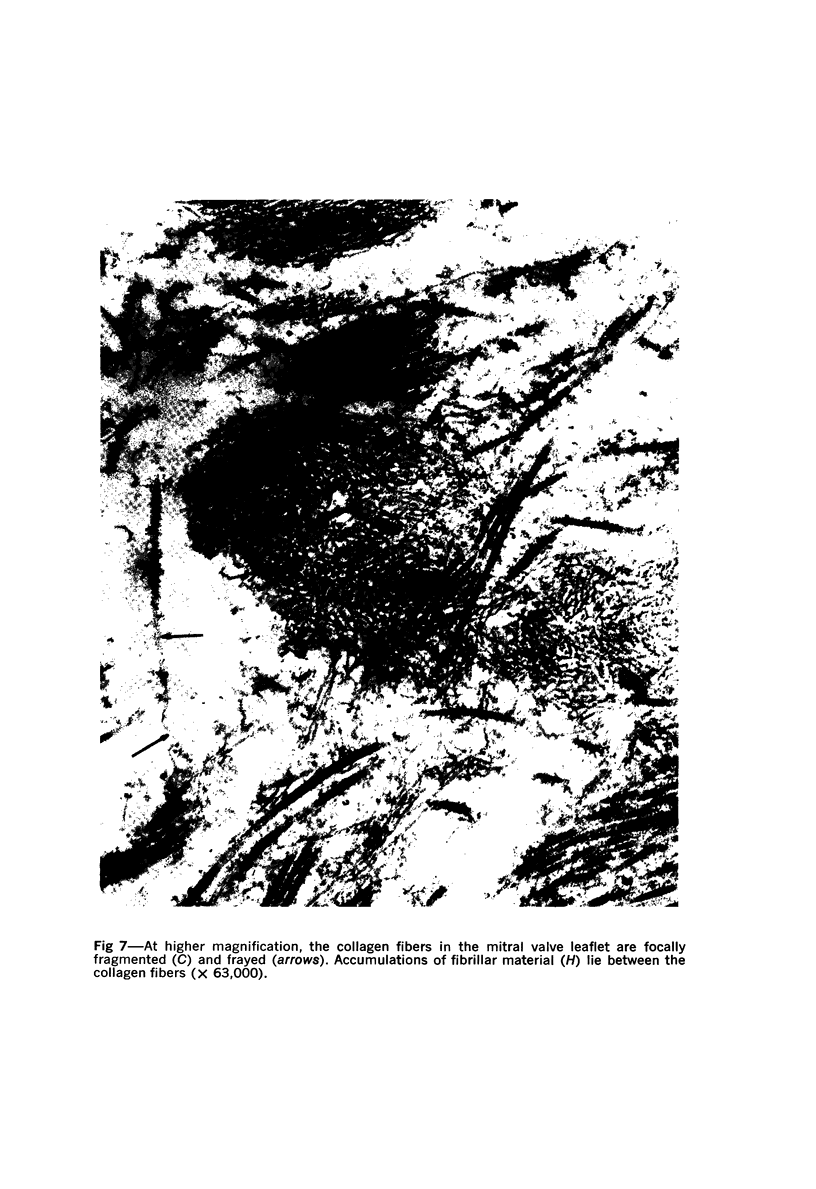
Images in this article
Selected References
These references are in PubMed. This may not be the complete list of references from this article.
- Berger J. M., Rona G. Functional and fine structural heterogeneity of atrial cardiocytes. Methods Achiev Exp Pathol. 1971;5:540–590. [PubMed] [Google Scholar]
- Caulfield J. B., Page D. L., Kastor J. A., Sanders C. A. Connective tissue abnormalities in spontaneous rupture of chordae tendineae. Arch Pathol. 1971 Jun;91(6):537–541. [PubMed] [Google Scholar]
- Côté G., Mohiuddin S. M., Roy P. E. Occurrence of Z-band widening in human atrial cells. Exp Mol Pathol. 1970 Dec;13(3):307–318. doi: 10.1016/0014-4800(70)90093-6. [DOI] [PubMed] [Google Scholar]
- Fenoglio J., Jr, Tuan-duc-Pham Ruptured chordae tendineae. An electron microscopic study. Hum Pathol. 1972 Sep;3(3):415–420. doi: 10.1016/s0046-8177(72)80041-8. [DOI] [PubMed] [Google Scholar]
- HARTMANN F., FRICKE R., ROEHR S. [Thickness and packing of collagen fibrils in the heart valves after rheumatic endocarditis]. Z Rheumaforsch. 1962 Feb;21:34–41. [PubMed] [Google Scholar]
- JAMIESON J. D., PALADE G. E. SPECIFIC GRANULES IN ATRIAL MUSCLE CELLS. J Cell Biol. 1964 Oct;23:151–172. doi: 10.1083/jcb.23.1.151. [DOI] [PMC free article] [PubMed] [Google Scholar]
- LEV M., BIRKNER M. L., IDRISS F. S., GRANA L., LARK R. G. EXTRACORPOREAL CIRCULATION EFFECT ON DOG'S HEART. ULTRASTRUCTURE STUDY. Arch Pathol. 1965 Mar;79:257–269. [PubMed] [Google Scholar]
- Lannigan R. A., Zaki S. A. Ultrastructure of the myocardium of the atrial appendage. Br Heart J. 1966 Nov;28(6):796–807. doi: 10.1136/hrt.28.6.796. [DOI] [PMC free article] [PubMed] [Google Scholar]
- Lannigan R., Zaki S. A. Ultrastructure of lesions of rheumatic carditis. J Pathol Bacteriol. 1967 Apr;93(2):449–461. doi: 10.1002/path.1700930206. [DOI] [PubMed] [Google Scholar]
- Laufer A., Garces C. J., Ron N., Friedman I., Borman J. B. Morphological and immunological studies in valvular heart surgery. Pathol Microbiol (Basel) 1970;36(4):230–242. doi: 10.1159/000162452. [DOI] [PubMed] [Google Scholar]
- Legato M. J. The correlation of ultrastructure and function in the mammalian myocardial cell. Prog Cardiovasc Dis. 1969 Mar;11(5):391–409. doi: 10.1016/0033-0620(69)90028-0. [DOI] [PubMed] [Google Scholar]
- MURPHY G. E. On muscle cells, Aschoff bodies, and cardiac failure in rheumatic heart disease. Bull N Y Acad Med. 1959 Oct;35:619–651. [PMC free article] [PubMed] [Google Scholar]
- McNutt N. S., Fawcett D. W. The ultrastructure of the cat myocardium. II. Atrial muscle. J Cell Biol. 1969 Jul;42(1):46–67. doi: 10.1083/jcb.42.1.46. [DOI] [PMC free article] [PubMed] [Google Scholar]
- Mohos S. C., Wagner B. M. Damage to collagen in corneal immune injury. Observation of connective tissue structure. Arch Pathol. 1969 Jul;88(1):3–20. [PubMed] [Google Scholar]
- Pienaar J. G., Price H. M. Ultrastructure and origin of the Anitschkow cell. Am J Pathol. 1967 Dec;51(6):1063–1091. [PMC free article] [PubMed] [Google Scholar]
- REYNOLDS E. S. The use of lead citrate at high pH as an electron-opaque stain in electron microscopy. J Cell Biol. 1963 Apr;17:208–212. doi: 10.1083/jcb.17.1.208. [DOI] [PMC free article] [PubMed] [Google Scholar]
- Ross R., Odland G. Human wound repair. II. Inflammatory cells, epithelial-mesenchymal interrelations, and fibrogenesis. J Cell Biol. 1968 Oct;39(1):152–168. doi: 10.1083/jcb.39.1.152. [DOI] [PMC free article] [PubMed] [Google Scholar]
- Roy P. E., Morin P. J. Variations of the Z-band in human auricular appendages. Lab Invest. 1971 Nov;25(5):422–426. [PubMed] [Google Scholar]
- SAPHIR O. The Aschoff nodule. Am J Clin Pathol. 1959 Jun;31(6):534–539. doi: 10.1093/ajcp/31.6.534. [DOI] [PubMed] [Google Scholar]
- TEDESCHI C. G., WAGNER B. M., PANI K. C. Studies in rheumatic fever. I. The clinical significance of the Aschoff body based on morphologic observations. AMA Arch Pathol. 1955 Oct;60(4):408–422. [PubMed] [Google Scholar]
- TEDESCHI C. G., WAGNER B. M. The problem of subclinical rheumatic carditis. Am J Med Sci. 1956 Apr;231(4):382–388. doi: 10.1097/00000441-195604000-00002. [DOI] [PubMed] [Google Scholar]
- WAGNER B. M. Studies in rheumatic fever: III. Histochemical reactivity of the Aschoffbody. Ann N Y Acad Sci. 1960 Jun 30;86:992–1008. doi: 10.1111/j.1749-6632.1960.tb42855.x. [DOI] [PubMed] [Google Scholar]
- WAGNER B. M., TEDESCHI C. G. Studies in rheumatic fever. II. Origin of cardiac giant cells. AMA Arch Pathol. 1955 Oct;60(4):423–430. [PubMed] [Google Scholar]
- Wagner B. M., Siew S. Studies in rheumatic fever. V. Significance of the human Anitschkow cell. Hum Pathol. 1970 Mar;1(1):45–71. doi: 10.1016/s0046-8177(70)80004-1. [DOI] [PubMed] [Google Scholar]





